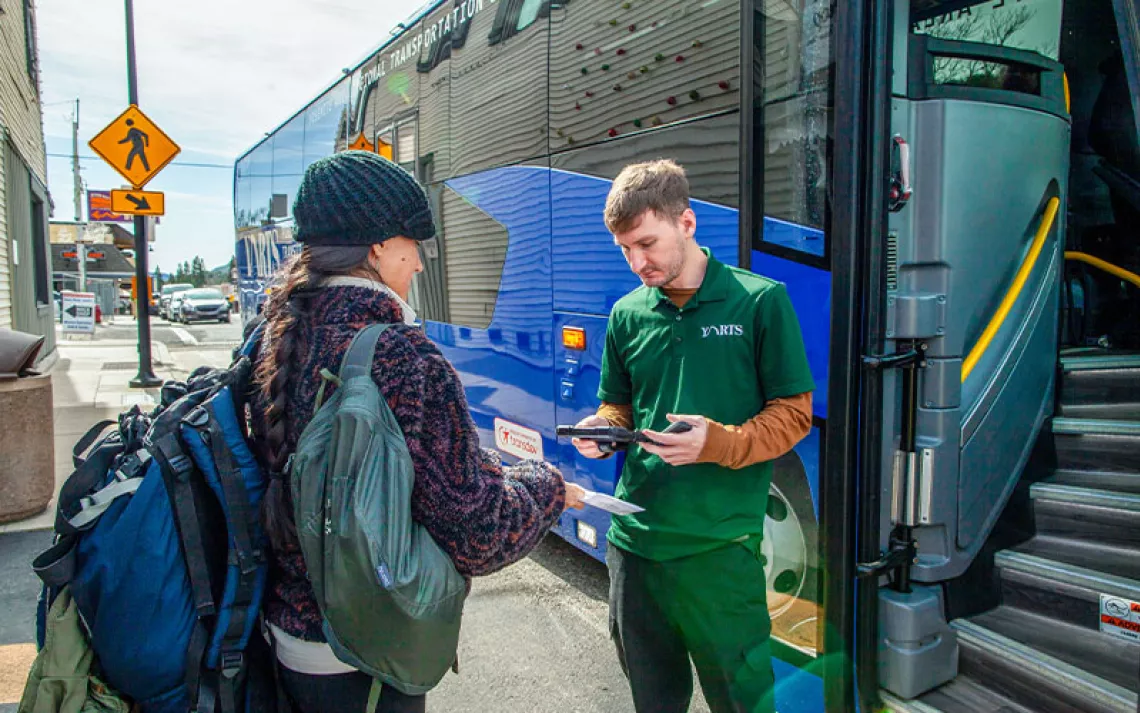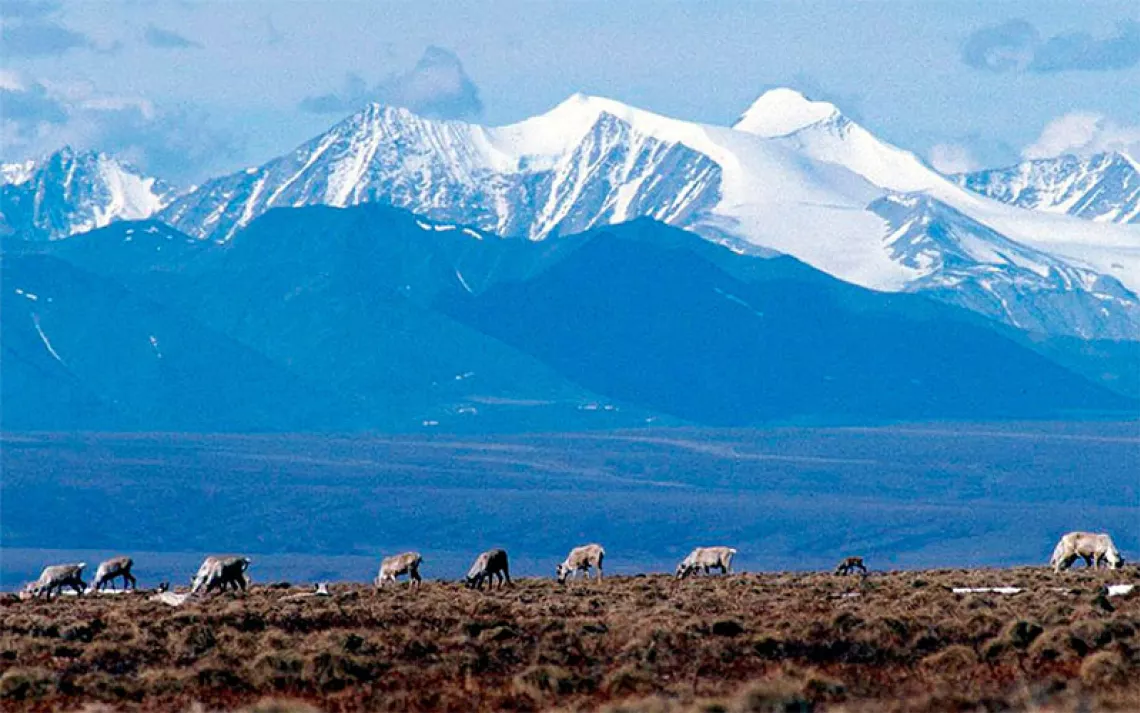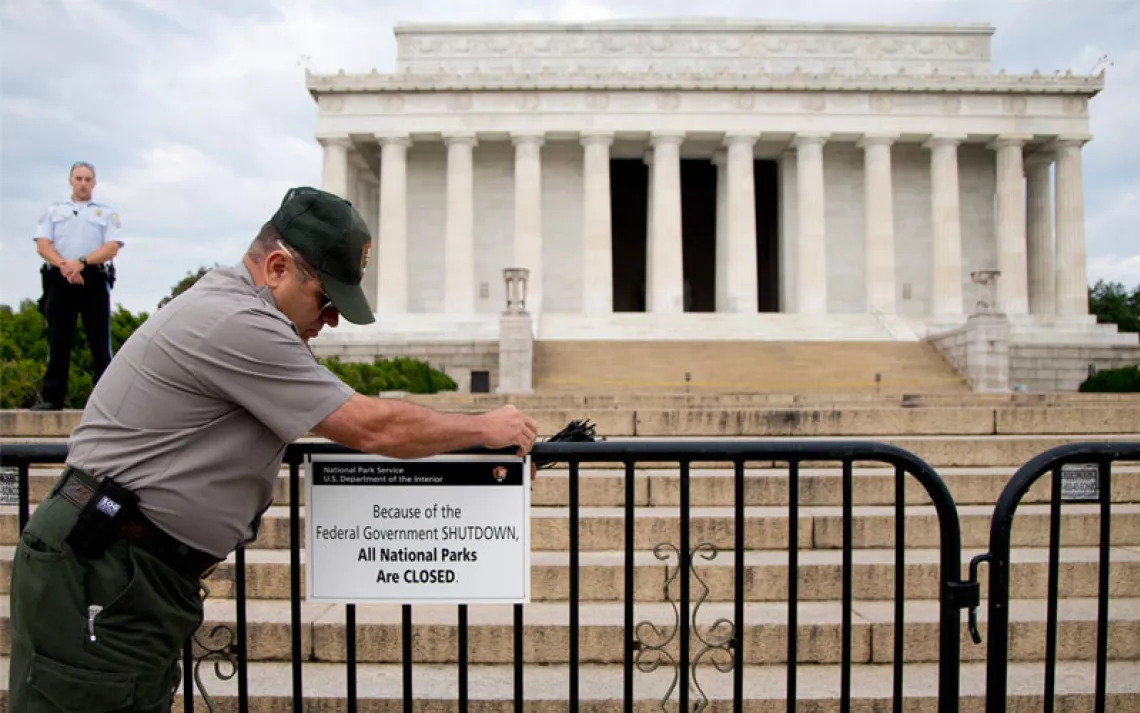What's in a Name? What It Means to Decolonize a Natural Feature.
Can changing the title of a mountain or river make it more culturally accessible?
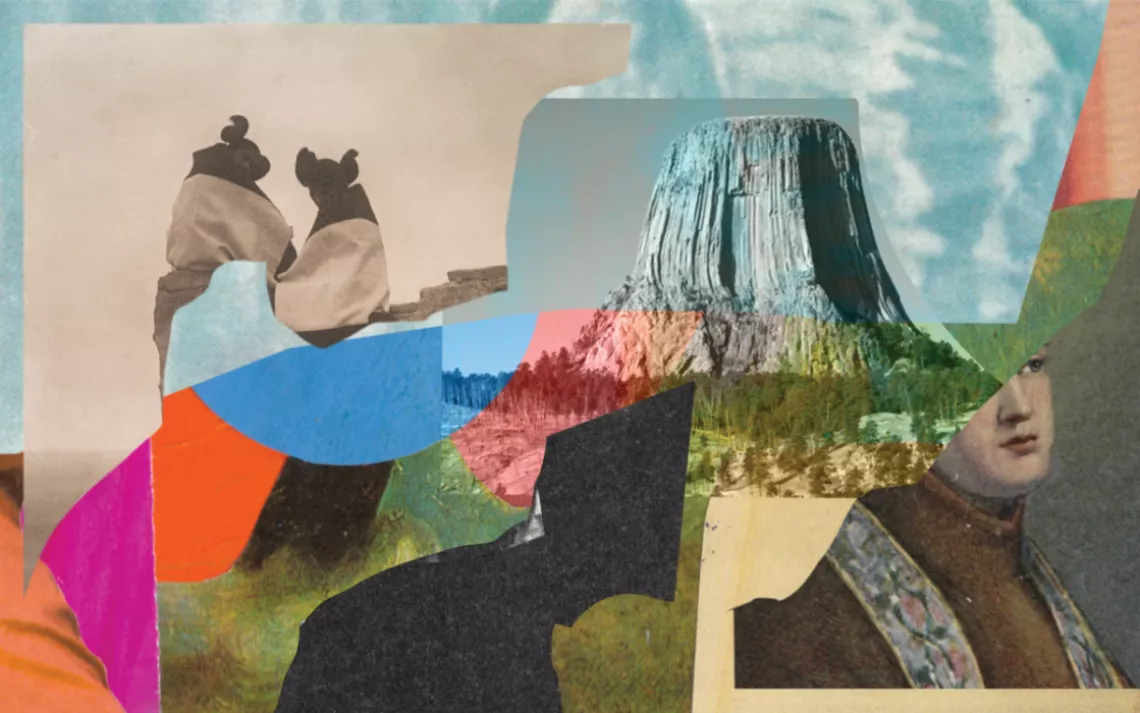
Illustrations by Aaron Marin
THERE ARE HUNDREDS UPON hundreds of them—by one count, more than 800. They are mountains, valleys, creeks, lakes, and other physical landmarks with one thing in common: They all have the word squaw in their name.
The exact derivation of squaw is unclear. Some etymologists say that it's an Algonquin word for "woman"; others say that it's a mistranslation of the Mohawk term for "vagina." In any case, it's inarguable that over the centuries the word became a misogynistic and racist slur directed at Indigenous women—a means of using language to demean. Yet the word is etched across the American landscape. There are at least 1,400 places across the United States whose official names contain a racial slur of some sort. By far the most common epithet is squaw (hereafter, I will use sq***).
Last November, Interior Secretary Deb Haaland, a member of the Laguna Pueblo, vowed to change that. Secretary Haaland announced the creation of a formal process to review and replace derogatory place-names. She also officially classified the term sq*** as offensive and created a federal task force to find replacement names. "Racist terms have no place in our vernacular or on our federal lands," Haaland said. "Our nation's lands and waters should be places to celebrate the outdoors and our shared cultural heritage—not to perpetuate the legacies of oppression."
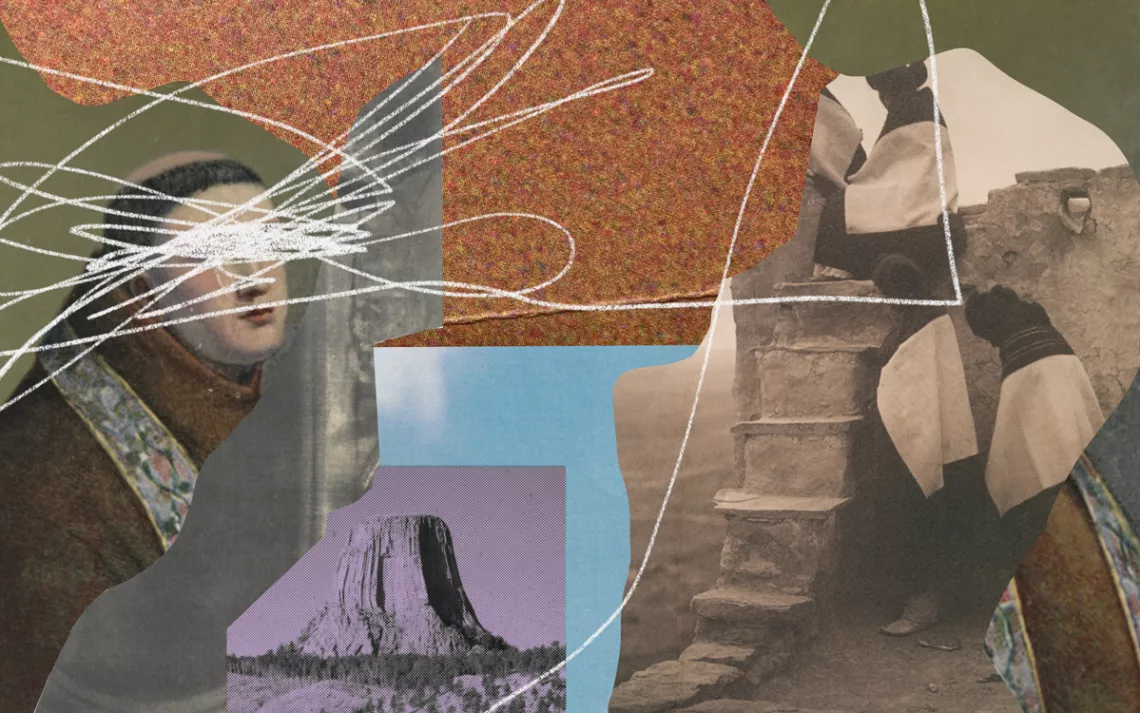
Haaland's initiative is just one part—though the most prominent and potent one—of a larger nationwide effort to revise and rewrite the names of places and landmarks that contain offensive terms. The ability to name a place is a form of power, and all too many colonial place-names are hatred inscribed upon the land. To call a place Sq*** Valley or Sq*** Creek is to project disrespect onto geography. But power can also be reclaimed and recovered by the marginalized. Name-changing is more than just the acknowledgment of the United States' history of brutality toward Indigenous peoples. It signals a desire to account for this past and to build a future that holds the possibility of righting profound wrongs. Erasing from the maps the slurs that once graffitied them is a way of affirming and respecting the pre–United States existence of those who were dispossessed.
And there are, of course, so many dispossessions to account for, dispossessions both physical and cultural. After European settlers arrived in North America, sooner or later most sought to replace the Indigenous populations. Typically, this began with the claiming and (re)naming of the land. Colonizers routinely imposed the names of their old countries on Native American lands, which is how we got New York, New England, New Jersey, Albany, Boston, Portland. Others christened places with names that reflected their religions: Los Angeles, San Clemente, San Francisco, Santa Barbara, Sacramento, St. George, St. Petersburg. And colonizers also bestowed upon the land the names of some who actively worked to destroy Native American nations—Washington, Jefferson, Custer, Carson, Jackson.
Four centuries of colonialism are mapped onto what had been Indigenous lands with Indigenous names for many thousands of years in what is currently called the United States. (While some Indigenous names remain—such as Massachusetts, Minnesota, Chicago, Utah, Mississippi, Iowa, Miami, and Oklahoma—many current residents of these places speak the words without realizing their Indigenous origins, ignorant of the fact that these places' original inhabitants were murdered or exiled to reservations.) Monuments to colonizers add insult to injury on the colonially remade landscape. The United States is littered with rivers, mountains, national forests, and wilderness areas named for people who either sought or supported the extermination of Indigenous people.
It's particularly offensive to Native Americans when geographical features in our ancient homelands and sacred places bear the names of violent colonizers. Take Kit Carson Peak in Colorado, a rock-climbing destination near Crestone (also a magnet for New Agers). It's named in homage to an army officer and notorious Indian fighter. In 1864, Carson led a scorched-earth campaign to relocate 11,000 Navajos to the Bosque Redondo internment camp in New Mexico. More than 2,000 died in the course of the Navajo Long Walk. Surrounding Kit Carson Peak is the traditional land of numerous Indigenous nations that shared the area, including the Ute, the Cheyenne, the Jicarilla Apache, and the Navajo. Also, in Washington, Mt. Kit Carson looms in Spokane County, originally the homeland of the Spokane Tribe of Indians.
Consider another Colorado 14er, Mt. Evans. It is named for John Evans, who was the territorial governor of Colorado in 1864 when white volunteer soldiers committed the infamous Sand Creek Massacre. Some 230 Cheyenne and Arapaho people, most of them women and children, were slaughtered on the banks of Big Sandy Creek. Evans's rhetoric about "hostile Indians" likely instigated the attack. Today, Mt. Evans continues to loom over the Denver skyline.
Some names are contentious for less obvious reasons. Theodore Roosevelt Lake in Gila County, Arizona, is named in honor of a former president who is celebrated as a conservationist and a defender of wild nature. But Roosevelt also openly supported the elimination of Native people, saying in an 1886 speech, "I don't go so far as to think that the only good Indians are the dead Indians, but I believe nine out of every 10 are. And I shouldn't like to inquire too closely into the case of the 10th."
Native Americans have long fought to change derogatory place-names—sometimes successfully. Harney Peak in South Dakota, originally named for an army general who led a violent massacre of the area's Indigenous Lakota peoples, was changed to Black Elk Peak in 2016 to honor a famous Lakota holy man. Mt. McKinley, named for President William McKinley—whose policies dispossessed tribes of their lands during the aggressive assimilation period in the late 19th century—was returned to its original Koyukon Athabascan name, Denali, in 2015 (some 35 years after the national park changed its name).
Some renaming efforts are more rogue in nature. Since 2017, Len Necefer, a Navajo climber and engineer, has been posting summit photos of himself and fellow Native adventurers atop famous peaks on social media. Necefer and his co-conspirators geotag the mountains, labeling them according to what they were called by their original, Indigenous discoverers. For example, Necefer identifies the Colorado 14er most recognized as Longs Peak as Neníisótoyóú'u, the mountain's Arapaho name. "I wanted to share the photos, and thought I would love to share them with the Indigenous place-names," Necefer told Outside in 2018. "When I couldn't find them, I decided to create them."
Grassroots movements like Necefer's have gained traction, but getting the federal government to take action has often been another story. Devils Tower in Wyoming is a sacred site known to the Lakota as Mato Tipila, or Bear's Lodge. Years of tribal efforts to change the name of Devils Tower National Monument have been unsuccessful so far; the most recent request was filed in 2014 by Lakota spiritual leader Arvol Looking Horse.
But some long-standing offensive place-names have been tossed into the dustbin of history. For decades, a Sonoran Desert mountain in the middle of Phoenix was known as Sq*** Peak. In 2008, the US Board on Geographic Names voted to change its name to Piestewa Peak, in honor of Lori Piestewa, a Hopi woman who was the first Native American female to die in combat while serving in the US military.
CALIFORNIA HAS AMONG THE highest number of place-names with derogatory terms—some 150-plus locations with names that are offensive to African Americans, Chinese Americans, and Native Americans, according to a 2015 review—and the state has been at the forefront of efforts to remove these place-names. A leader in that effort is California assemblyman James C. Ramos, former chairman of the San Bernardino–based San Manuel Band of Mission Indians tribe. In 2018, Ramos became the first California Indian ever elected to the state legislature. In January 2021, he introduced A.B. 338, a bill to remove offensive statues and monuments from the California Capitol grounds and to establish a monument to California Native people.
"It's time for Californians to come to an agreement to make changes to place-names that are hurtful to California Indians," Ramos told me in summer 2021, when we met in his office at the state capitol. Alongside the American flags and state seals decorating his oak-paneled walls, Ramos displays the official flag of the San Manuel Band of Mission Indians. The flags flank a glass case displaying a piece of ceremonial dance regalia made from eagle feathers—it's what draws your eye as you enter Ramos's office, imparting a sense of spiritual sacredness in contrast to the symbols of state power. "What we need in Indian Country is to have advocates from outside Indian Country bring attention to these issues."
California's capital itself was the scene of a crime against humanity. Sacramento was central command for the fledgling state when, in 1851, its first governor, Peter Burnett, declared an official policy of Native American extermination that led to the death of 16,000 California Indians. Lasting through the 1870s, the tactics of genocide were carried out through citizen militia groups that were paid bounties with state and federal money designated for killing Indians. The efforts at extermination were brutally effective.
No monuments are more offensive to California Indians than the dozens honoring Spanish missionary Junípero Serra. California Indians hold Serra responsible for the brutal mission system that enslaved and abused them, leading to a precipitous population decline beginning in the late 18th century. During the racial-justice protests in summer 2020, several Serra statues were toppled throughout the state, including one that had stood in Sacramento's Capitol Park since the 1960s.
Some Catholics were mortified by the vandalism, seeming not to understand why Native people see Serra as a villain. As an elected official, Ramos was able to use his legislation to engage Californians in a critical conversation about Serra's problematic history. With his bill, Ramos hoped to ensure that the statues would never be replaced with more Serra monuments. Last September, Governor Gavin Newsom signed the bill into law after it received nearly unanimous approval from legislators in both state chambers.
For Ramos, education is the key to correcting a legacy of place-names that celebrate a dishonorable past. As an Indigenous woman, I still remember the sense of dissonance I felt as a kid stemming from the incorrect history I was taught in school compared with the stories my mother told me about the injustices our people, the Colville Confederated Tribes, suffered. As an educator, I know firsthand that young people need to trust that they are being told a truthful story. Changing offensive place-names is a step in that direction.
In his capitol office, Ramos and I spoke about the years-long struggle to change the name of the world-famous Lake Tahoe ski resort Sq*** Valley. "I've been working to change that name since I was chairman of San Manuel, but it seems like now people are more open to changing the name because of the current moment," Ramos said. "I understand that the company who owns the ski resort is now open to removing the name because it's so deplorable to Native women."
Indeed, in 2020, the Alterra Mountain Company, which owns a network of ski resorts in the United States and Canada, announced plans to change the name to Palisades Tahoe. The question now is, will municipalities that bear the same offensive moniker follow suit?
Some 300 miles away from Tahoe in Fresno County California, some among the town of Sq*** Valley's roughly 3,600 residents have not been enthusiastic about a name change (particularly those whose businesses bear the word sq***), despite the organized efforts of local tribal community members pushing for it. Leading the charge is Roman Rain Tree, an enrolled Dunlap Band of Mono Indians member who heads the group Rename Sq*** Valley Fresno County. The group has proposed the name Nuum Valley (Nuum means "the people" in the Western Mono language). "The current name underscores the disparaging impact on the local community of which the name represents," he wrote in a Facebook post promoting a petition that as of January had been signed by more than 35,000 people. "The word perpetuates a sexualized, exploitative,and humiliating narrative that continues to focus the desires and disgust of early Euro-Americans on the bodies of Native American women."
Ramos pointed out that educating the public is a major challenge when for so many years people have accepted the names, no matter how derogatory they are. "They say the name, you know, and they go up there and ski all those years. What's wrong with that? Well, it's been bad. It's been bad from the beginning, and it's bad now," Ramos told me. "But if we, as Indian people, don't take advantage of the situation and the atmosphere around us to start getting these names changed, then we're going to see another 100 years go by with these names still there."
Changing derogatory place-names and removing offensive monuments is an important step in the process of restorative justice. However, this shouldn't be a distraction from more meaningful efforts to restore lands and sovereignty to tribal nations. To be effective, change needs to be institutionalized and structural—and nationwide. Piecemeal, state-by-state efforts are not enough.
Which is exactly why Secretary Haaland's newly formed commission to revise derogatory place-names on federals lands is so important. And it's why we need federal legislation like the proposed Reconciliation in Place Names Act. First introduced in September 2020 by then-representative Haaland and Texas representative Al Green, chair of the Congressional Black Caucus, the bill has been reintroduced in the current Congress. For the most part, it would do the same things outlined in Haaland's secretarial order—but would have the lasting force of federal law behind it.
Naturally, Ramos applauds these efforts and sees them as a step in the right direction. Haaland's elevation to secretary of the interior gives her even more power, and for Ramos, this is cause for cautious optimism. "Representation truly matters, with Secretary Haaland there, myself here, and others. But we need more Indian people elected so we can keep moving on these issues that plague us."
CALIFORNIA, ONCE AGAIN,OFFERS an encouraging example of how representation can make a real difference—and how something as seemingly basic as changing a place-name can represent a positive turn. In 2019, Governor Gavin Newsom issued an executive order formally apologizing to California Indians for the history of state-sanctioned genocide and related atrocities. The order also established the nation's second-ever truth and reconciliation commission related to Indigenous issues—the California Truth and Healing Council. (The first Indigenous truth and reconciliation commission was formed in Maine in 2013 but did not include any commitments to changing colonial place-names.) Under Newsom's reconciliation order, the California Advisory Committee on Geographic Names, which advises the US Board on Geographic Names, will assess offensive place-names. "The governor sent this committee forward to look at the different building names that the state oversees and geographical areas, and change them to names that are more acceptable, especially to California Indian people," said Ramos, who's an ex officio member of the state committee.
That is how the name of Santa Barbara's former Indio Muerto, a.k.a. Dead Indian Street, was changed. The original street name was created after surveyors laying out the city's grid unearthed the grave of a lone Chumash man. According to Ramos, some people in Santa Barbara believed that the name was meant to honor the man. But in a state that had an explicit policy of Indian extermination when the road was named in 1851, the explanation rings hollow—not unlike the disingenuous claims that the Washington Commanders' owner, Dan Snyder, made for years before finally changing the original offensive franchise name.
In 2020, the Barbareño Band of Chumash Indians Tribal Council, state legislators, and the Santa Barbara City Council agreed to get rid of the old name. The street is now known as Hutash. It's a Chumash word with multiple meanings, and the most common translation couldn't be further from the derogatory sq***. Hutash means "Mother Earth."
This article appeared in the Spring 2022 quarterly edition with the headline "What's in a Name?" However, it has been updated, as the original version of this story erroneously conflated two different name-change endeavors: one at the ski resort in Placer County, California’s Olympic Valley (which has already been changed from Sq*** Valley to Palisades Tahoe Resort) and another in the town of Sq*** Valley in Fresno County, California, which is located more than 300 miles away from the ski resort. Whereas we initially reported that activist Roman Rain Tree was leading a petition to change the name of the town surrounding the Placer County ski resort, Rain Tree is in fact an activist in the Fresno County town, which has yet to change its name. We regret the error.
 The Magazine of The Sierra Club
The Magazine of The Sierra Club

